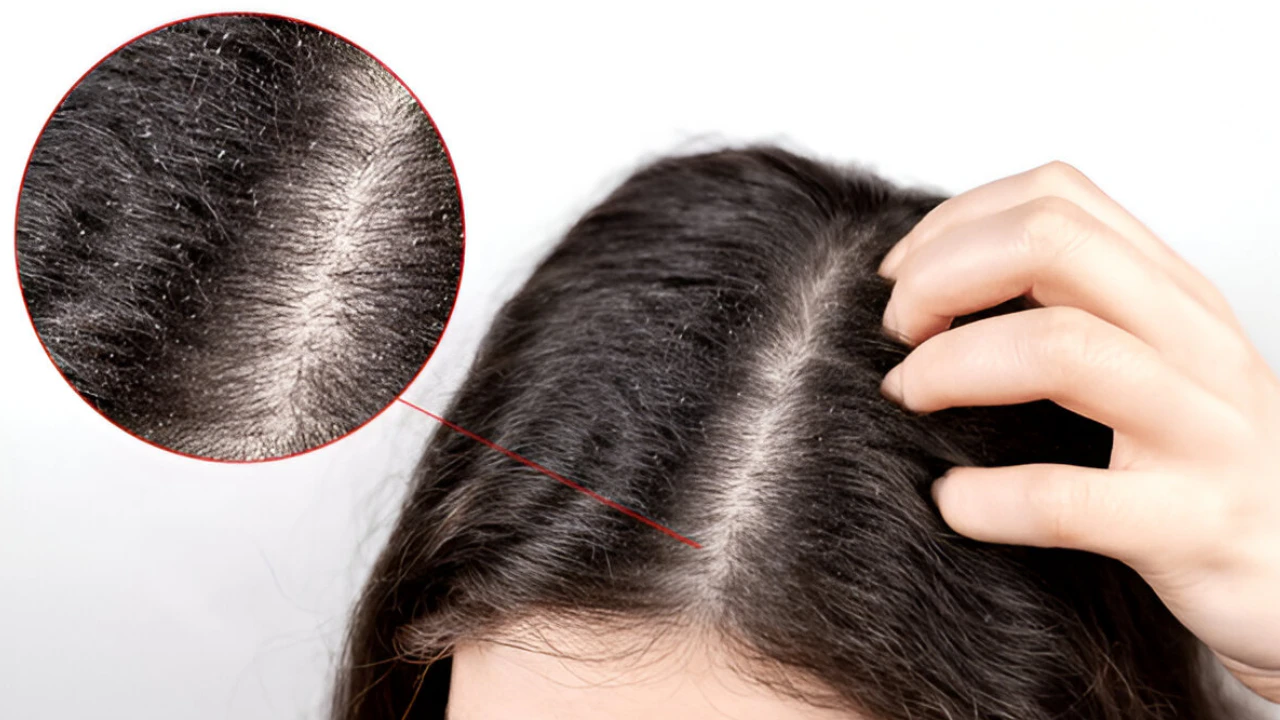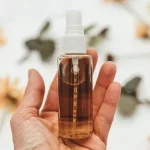Have you ever scratched your head—figuratively or literally—questioning if head lice are attracted to grimy hair? It’s a query that pops up time and again, particularly while an itchy scalp sends mother and father into a panic. The concept that lice opt for unclean hair is one of those myths that just received’t move slowly away. But what’s the real story? In this text, we’re diving deep into the sector of head lice to split reality from fiction. We’ll discover whether or not hair cleanliness subjects, who’s most at risk, and how to tackle those pesky critters with self assurance. Grab a cup of tea, get comfy, and permit’s chat about head lice in a way that’s clean to understand and maybe even a bit fun!
A Personal Tale: Leilani’s Lice Surprise
Let me start with a tale approximately my buddy Leilani. She’s the sort of mom who maintains the entirety spotless—her children’ garments are continually pressed, and her house smells like lavender and sunshine. So, consider her shock whilst her 7-year-old daughter came domestic from faculty scratching her head like crazy. A short peek found out the culprits: head lice. “How may want to this happen?” Leilani groaned. “Her hair is washed each different day!” Like so a lot of us, she’d sold into the concept that lice simplest show up whilst hygiene takes a holiday. But as we’ll see, that’s now not how those little invaders paintings. Leilani’s revel in is a super leaping-off point to explore the fact about head lice and whether they clearly care approximately dirty hair.
What Are Head Lice, Anyway?
Before we get into the nitty-gritty (pun intended), permit’s cover the basics. Head lice are tiny bugs—approximately the scale of a sesame seed—that installation camp on human scalps. They’ve got six legs with tiny claws that assist them hang to hair like expert rock climbers. These critters continue to exist by sipping tiny quantities of blood from the scalp, that is why they make you itch like mad. Unlike fleas or bedbugs, lice don’t bounce or fly; they’re crawlers, moving from one head to any other via near contact. And right here’s a amusing reality: they’ve been bugging human beings for lots of years—archaeologists have even located lice combs in historical tombs!
What Do They Look Like?
If you’ve in no way seen head lice up near (fortunate you!), image this: they’re small, about 2-3 millimeters lengthy, and may be tan, gray, or brownish, relying on when they final ate. Their eggs, known as nits, are even tinier—oval-fashioned and typically white or yellowish. Nits keep on with hair shafts like glue, that’s why they’re often incorrect for dandruff. But right here’s the giveaway: dandruff flakes off easily; nits don’t budge with out a few critical attempt. Spotting them normally means a near inspection near the scalp, specifically across the ears and neck.
How Do Lice Spread?
Head lice are social butterflies inside the worst manner. They unfold basically thru direct head-to-head touch—think kids huddled collectively at school, laughing for the duration of a sleepover, or snapping selfies with buddies. That’s their golden opportunity to move slowly from one scalp to any other. Sure, they can hitch a trip on shared hats, combs, or pillows, however that’s much less common. Why? Because lice can’t continue to exist lengthy off a human head—approximately 24 to 48 hours, tops. So, while it’s clever to keep away from sharing hairbrushes, the actual hazard comes from cozying up too near a person who’s already got them.
The Big Question: Do Lice Like Dirty Hair?
Alright, let’s address the million-greenback query: do lice select grimy hair? If you’ve ever felt judged for a lice outbreak, you’re now not by myself. The delusion that head lice flock to unwashed heads has been round forever, probably as it ties into antique thoughts about hygiene and pests. But here’s the fact: lice don’t care in case your hair is squeaky smooth or hasn’t visible shampoo in every week. They’re equal-opportunity invaders. In truth, some oldsters argue that smooth hair might honestly be easier for lice to navigate—less oil and dirt to slow them down. But don’t take that as gospel; the jury’s still out on that one.
What Does Science Say?
The experts lower back this up. The Centers for Disease Control and Prevention (CDC) says loud and clean: head lice aren’t a signal of bad hygiene. They’ll thankfully set up shop on any scalp, smooth or now not. A study in the magazine PLOS ONE looked at children with and without lice and observed no link among hair cleanliness and infestations. Another tidbit? Lice don’t thrive in greasy hair—they need a scalp to feed on, not a particular hair circumstance. So, whether you’re a each day shampooer or a dry-shampoo devotee, lice aren’t choosing you based totally in your hair-washing habits.
Why Does This Myth Stick Around?
So why does anybody preserve saying lice like dirty hair? Blame it on stigma. Getting lice can experience embarrassing—find it irresistible’s a non-public failing. People whisper approximately it, assume it’s tied to forget, and the myth grows legs (or claws, in this example). But here’s the deal: lice don’t decide, and neither must we. They’re simply seeking out a heat scalp and a blood buffet. By busting this fantasy, we can ditch the shame and attention on what simply topics—disposing of them.
Who’s Most Likely to Get Head Lice?
Okay, so lice don’t care approximately dirty hair, but they do have possibilities on the subject of their hosts. Knowing who’s at risk allow you to live one step ahead of these creepy crawlies.
Kids and Close Quarters
Hands down, children elderly 3 to 11 are the VIPs of the lice international. Why? They’re all about hugs, games, and piling into forts—best lice-spreading scenarios. The CDC estimates 6 to 12 million infestations hit this age organization in the U.S. Every yr. Schools, daycares, and summer season camps are like lice conventions—masses of heads, plenty of touch. That’s why parents frequently get that dreaded observe domestic: “Lice alert!”
Does Hair Length Matter?
Here’s wherein things get interesting. Longer hair—think ponytails or braids—offers lice more to grab onto. That’s why women tend to get lice extra often than boys, although short hair isn’t a free skip. Lice can hang to any length if they get the hazard. And right here’s a curveball: hair kind can play a function too. African Americans, as an example, are much less susceptible to lice due to the fact their hair shafts are fashioned in another way, making it more difficult for lice to latch on. Still, no person’s absolutely immune.
Other Risk Factors
Beyond age and hair, crowded residing areas—like dorms, shelters, or military barracks—up the percentages. Sharing stuff like headphones or scarves can also spread lice, though it’s now not their favored method. Bottom line? The greater heads you’re rubbing in opposition to, the higher your chance. But don’t worry—information is energy, and we’re approximately to arm you with the whole thing you need to combat returned.
Treatment and Prevention: Your Game Plan
Found lice? Don’t freak out—they’re demanding, not risky. With a touch understanding, you can kick them to the scale down and keep them from coming lower back. Let’s damage it down.
Spotting the Little Pests
First things first: verify you’ve got lice. Grab a high-quality-enamel comb—like the ones offered as “lice combs”—and some vivid mild. Wetting the hair can gradual lice down, making them easier to spot. Look near the scalp, in particular behind the ears and at the nape of the neck. Seeing stay lice crawling or nits glued to hair? That’s your sign. If you’re no longer sure, a medical doctor or school nurse can help double-test.
How to Treat Head Lice
For most oldsters, over-the-counter (OTC) remedies are the pass-to. Products with pyrethrins (like Rid) or permethrin (like Nix) are designed to zap lice. Here’s the drill: observe as directed, commonly leaving it on for 10 minutes, then rinse. Heads up—you’ll in all likelihood want a second round 7 to 10 days later to seize any hatchlings. If OTC stuff doesn’t cut it, your medical doctor might prescribe something more potent, like ivermectin or malathion. Pro tip: check with a pro earlier than treating infants, pregnant parents, or all and sundry with touchy pores and skin.
Now, a phrase on “extremely good lice”—lines resistant to common treatments. They’re real, however don’t panic. Combing (more on that subsequent) and on occasion prescription meds can still do the trick. And please, skip the antique-school treatments like gasoline or mayonnaise—they’re dangerous or simply undeniable messy without a evidence they work.
Combing Out Nits and Lice
Treatment kills lice, however nits can linger. That’s in which combing comes in. Section the hair, comb from root to tip with that fine-enamel comb, and wipe it smooth on a paper towel after each skip. You would possibly see lifeless lice or nits—gross, but pleasant. Do this every couple of days for 2 weeks to be sure you’ve got all of them. Some OTC kits include combs; if no longer, seize one from the drugstore. Patience is fundamental here—consider it as a lice eviction birthday celebration.
Keeping Lice Away
Prevention’s all about breaking the lice cycle. Teach youngsters to skip head-to-head cuddles during playtime (easier said than achieved, I recognize). No sharing hats, brushes, or earbuds, both. Check hair weekly if there’s a virus—after sleepovers or camp, specifically. Some swear by means of tea tree or lavender oil as a repellent, but technology says it’s iffy at satisfactory. Stick to vigilance and correct behavior, and also you’ll reduce your odds big-time.
Dealing with the House
Lice don’t live long off heads, but a quick cleanup can’t harm. Wash bedding, garments, and towels in hot water (as a minimum a 130°F) and dry on excessive heat. Vacuum rugs and fixtures where infested heads were. Stuff you can’t wash—like helmets or crammed animals? Seal it in a plastic bag for two weeks; lice and nits will die off. No need to fumigate the complete house—save your power for the scalp war.
The Benefits and Risks of Understanding Lice
Why bother learning all this? For starters, understanding lice don’t target dirty hair takes the guilt out of an infestation. You’re no longer a horrific discern or a slob—it’s simply biology. Plus, expertise how they unfold method you may act fast, maintaining them from hopping to every person within the residence. The threat? Ignoring the problem or falling for myths could make it worse—delays imply more lice, extra eggs, greater itch. Knowledge is your superpower here.
Conclusion: Lice Don’t Care About Your Shampoo
So, do lice like grimy hair? Nope—they’re now not that picky. Clean, grimy, lengthy, short, kid, grownup—lice will crash any scalp party they can crawl to. It’s all approximately contact, no longer cleanliness. Armed with the statistics, you can ditch the myths, deal with infestations like a pro, and maintain your family lice-unfastened without dropping your cool. Got a lice tale or a query? Drop it in the feedback—I’d like to hear from you! For more nit-selecting information, take a look at out the CDC’s head lice web page.
Head lice are a problem, but they’re no longer a disaster. With the proper tools and a touch persistence, you’ve were given this. Stay curious, live proactive, and allow’s keep those scalps itch-free together!


















Leave a Reply
You must be logged in to post a comment.